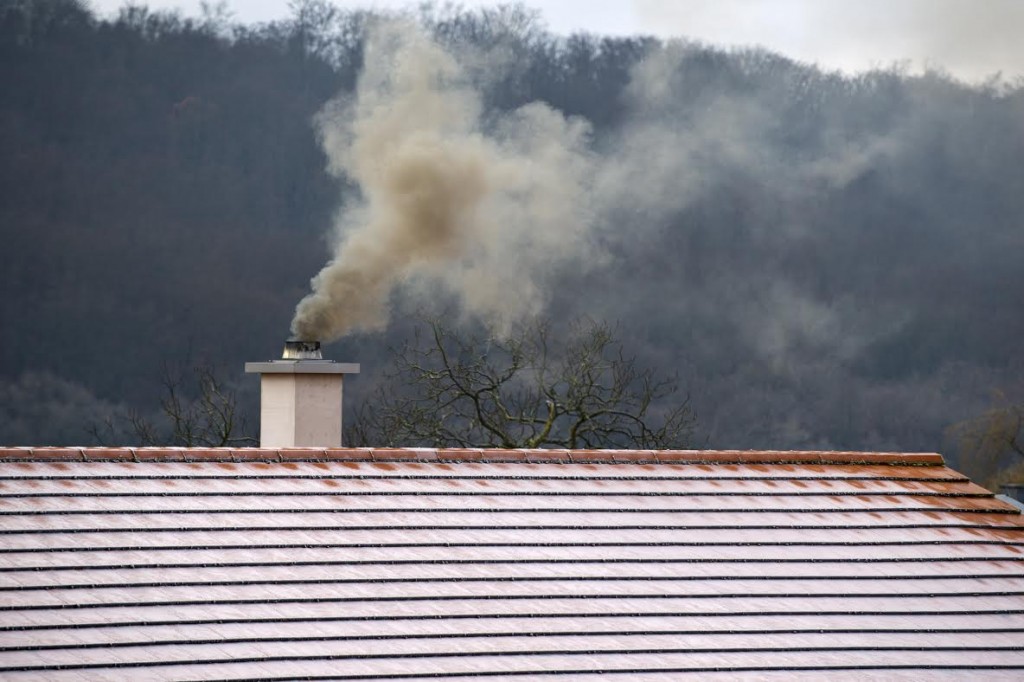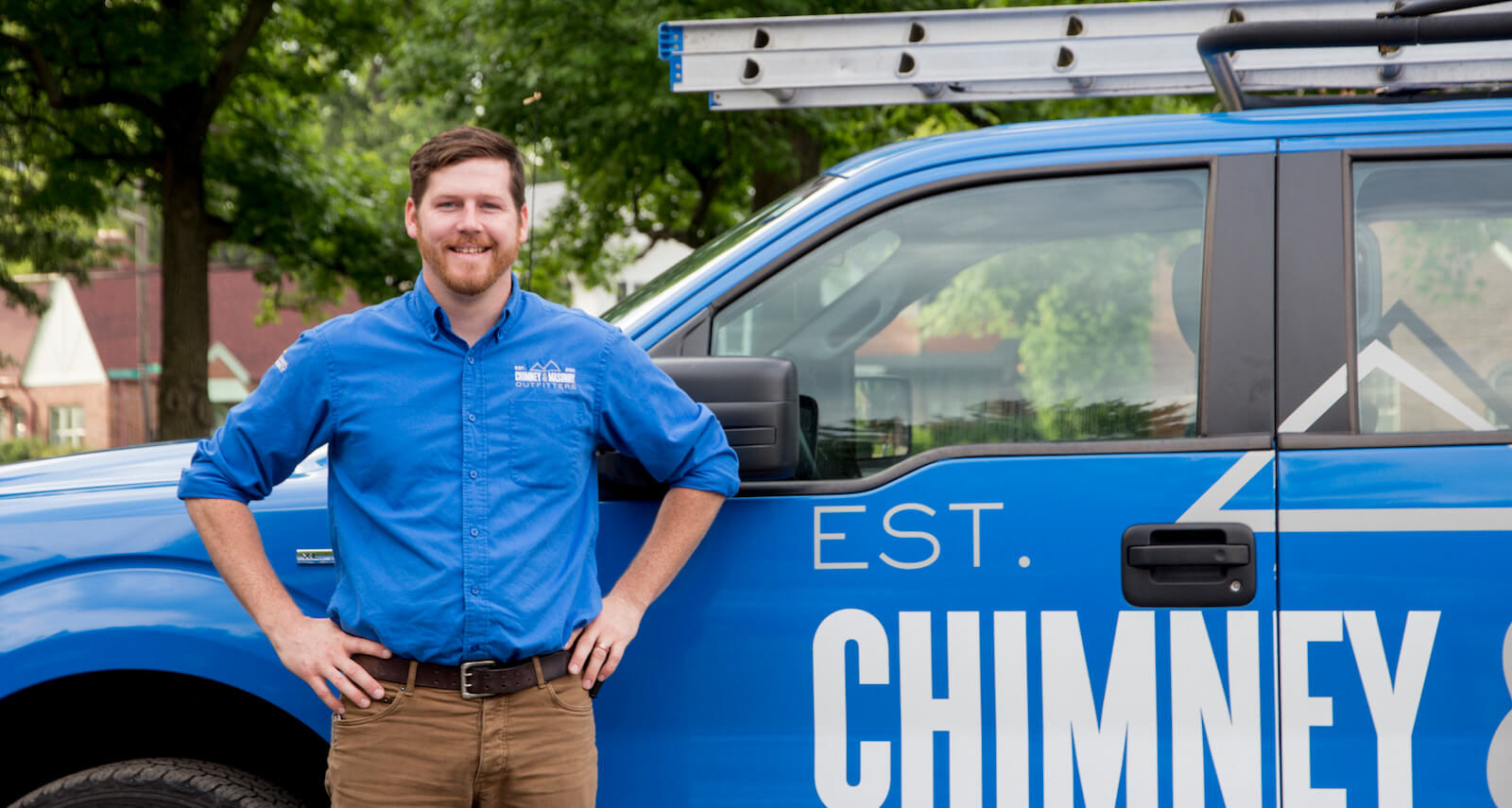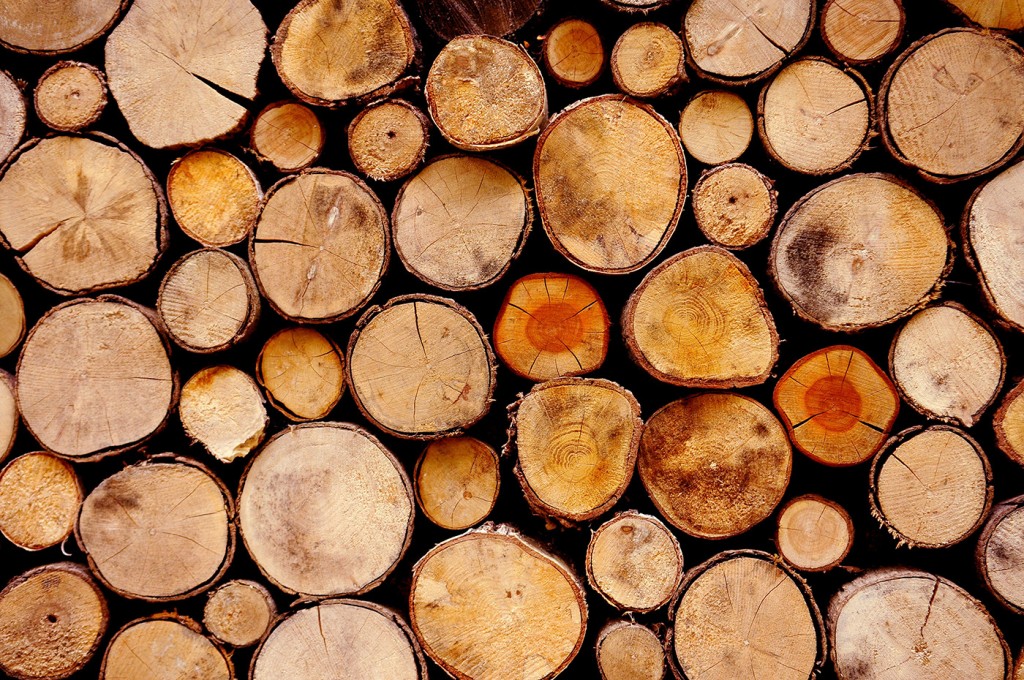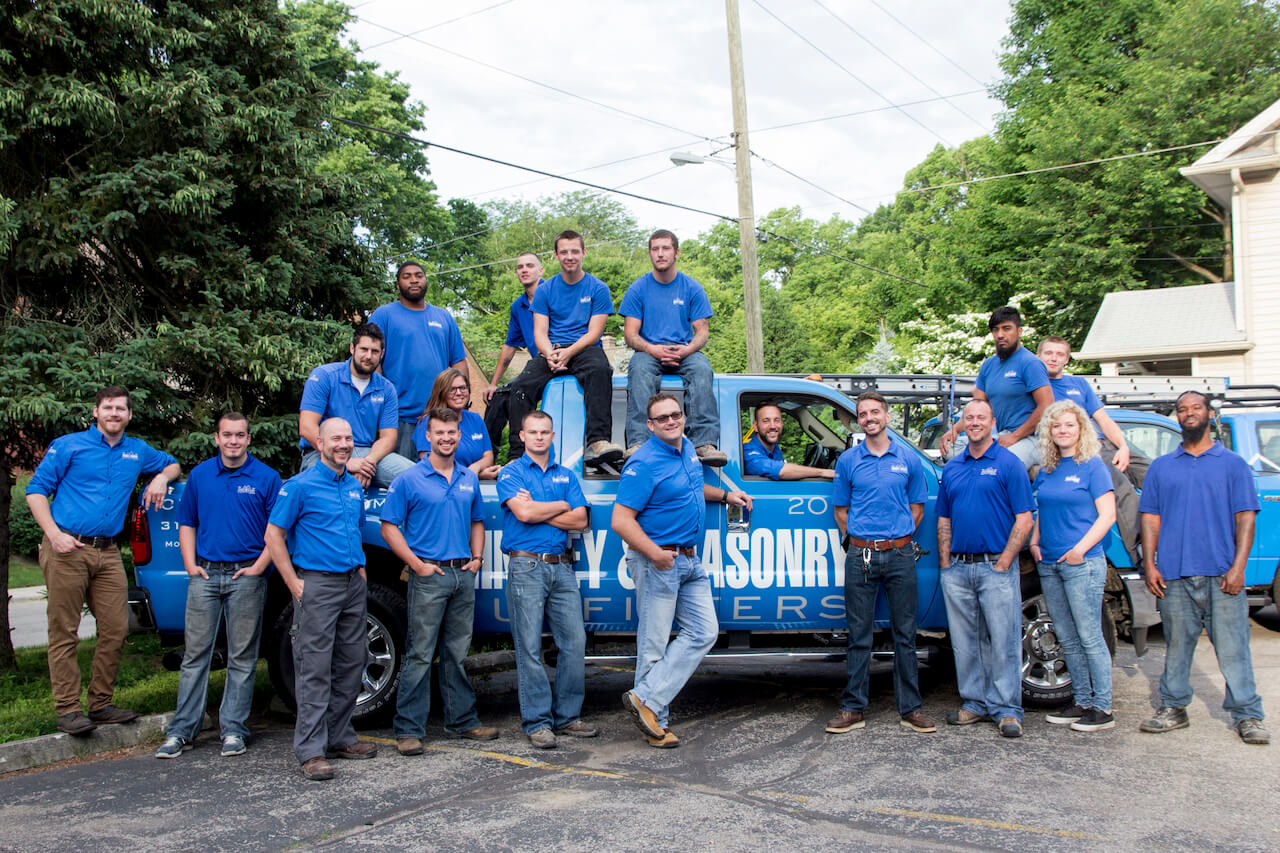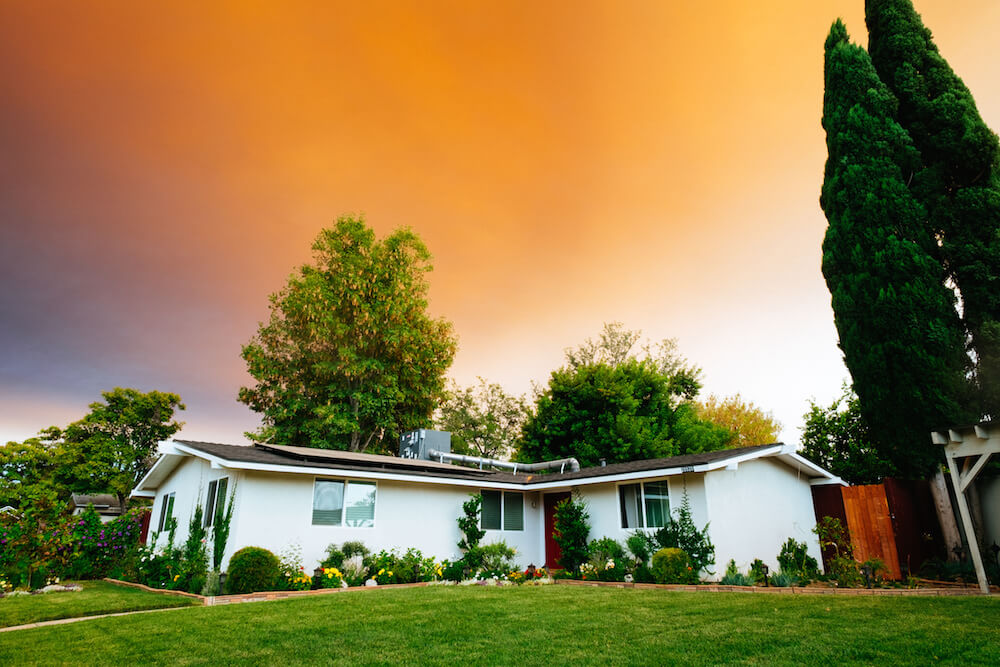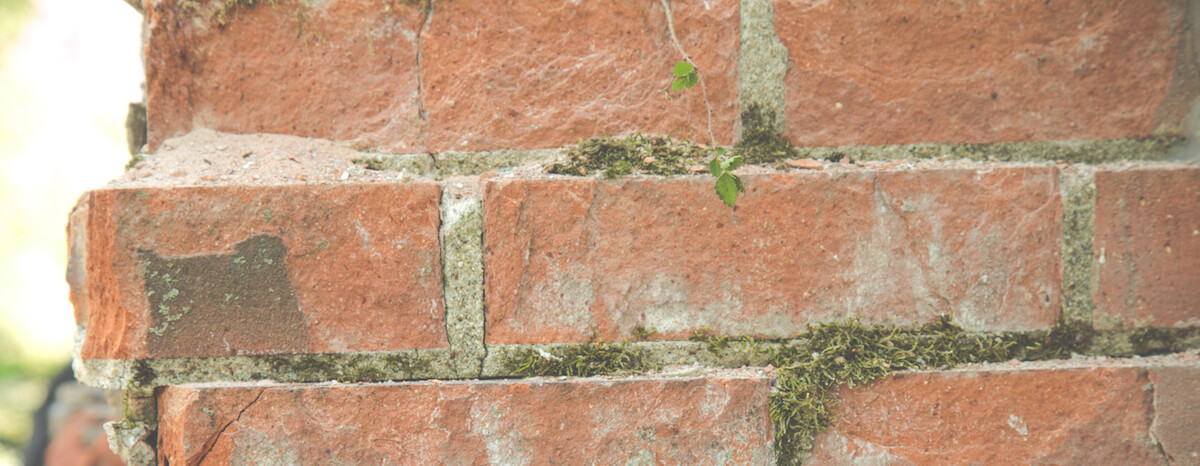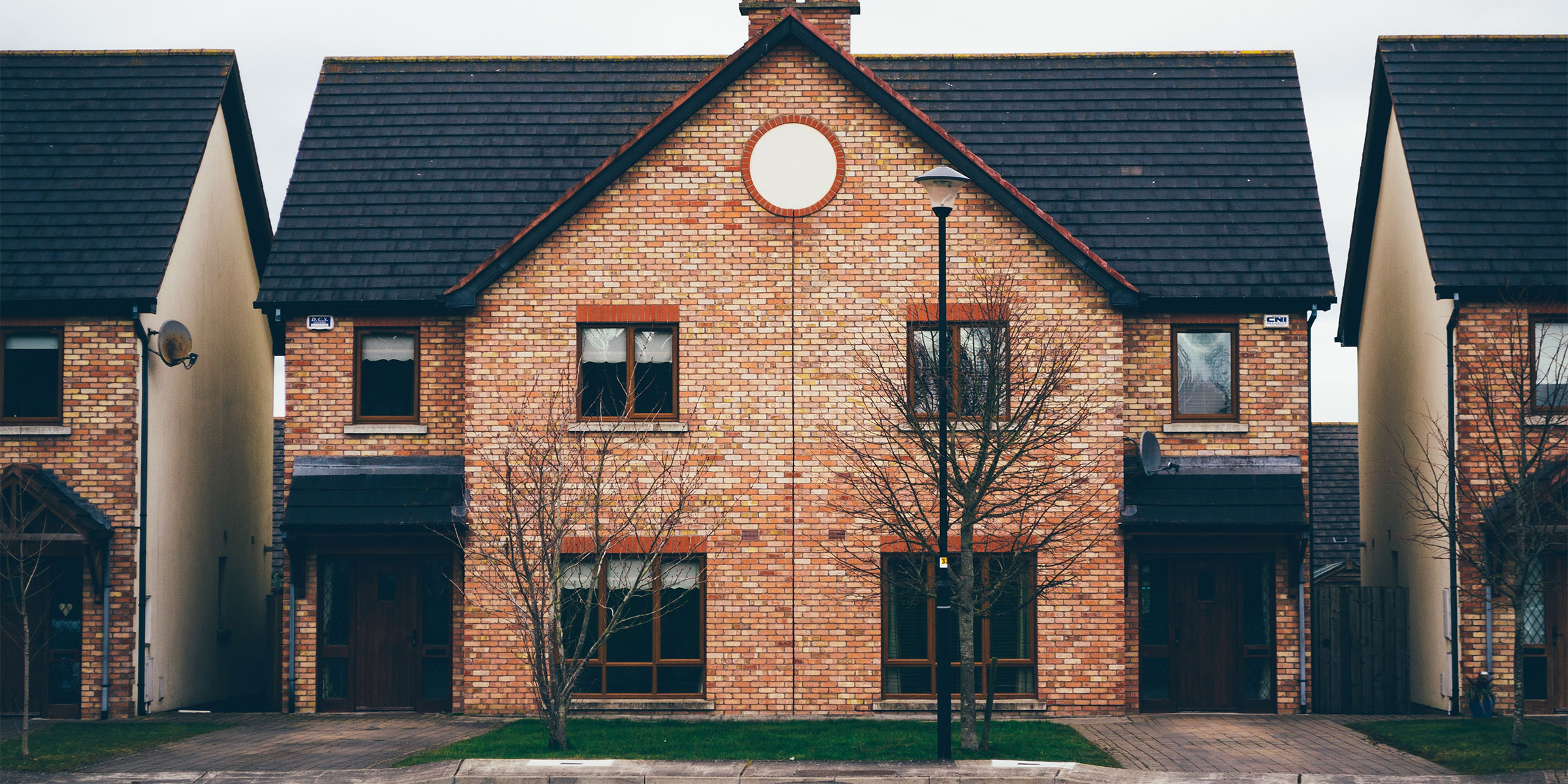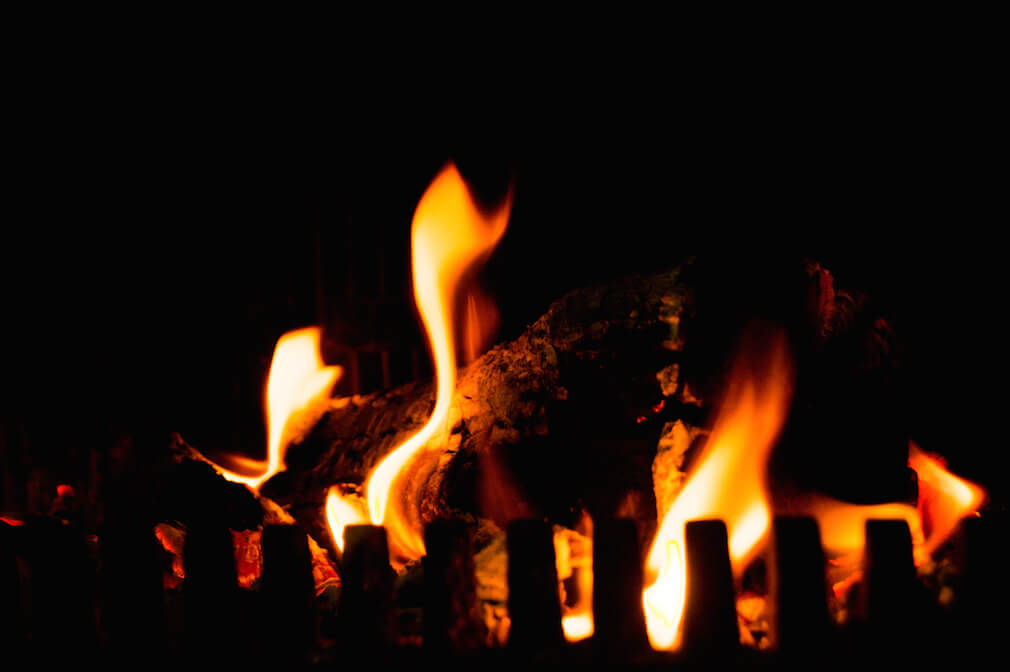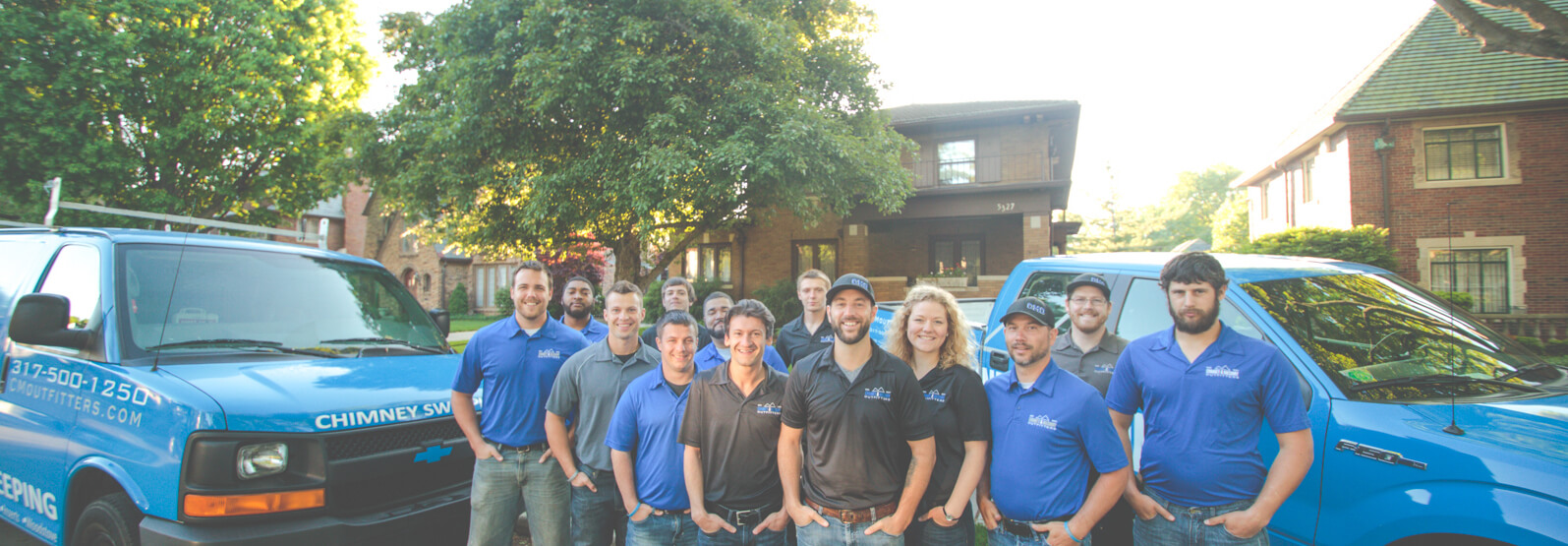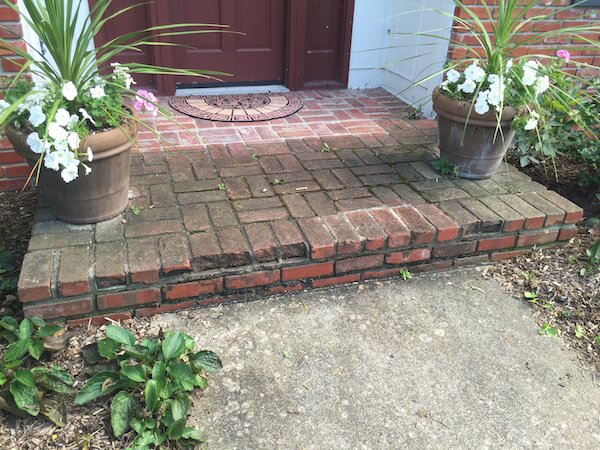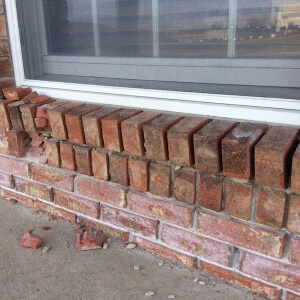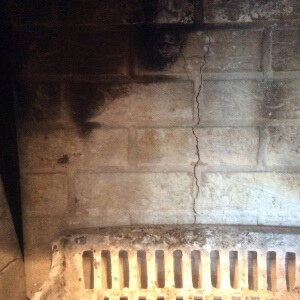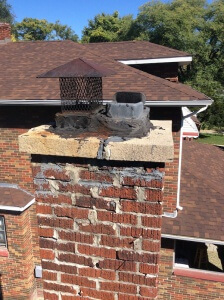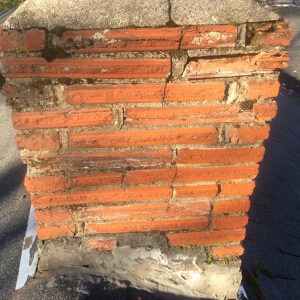The Three Whys
Fire-burning season is upon us - we smell those fire-pits and chimneys on evening walks through the quiet Broad Ripple neighborhoods - the best!
It's been a beautiful Fall so far, and that chimney is going to get its fair-share of use! According to the 2017 Farmers' Almanac (which came out in August 2016), "forewarns that exceptionally cold, if not downright frigid weather will predominate over parts of the Northern Plains, Great Lakes, Midwest, Ohio Valley, the Middle Atlantic, Northeast, and New England this winter (http://farmersalmanac.com/)."
That...means Hoosiers, all of us! But, let's say you've already rolled your eyes, and the Farmers' don't hold much weight in predicting your Winter - unfortunately none of this negates the importance of having your chimney swept.
We are going to give you three simple reasons why this needs to be done, at least once a year (and now would be an ideal time):
- Because the National Fire Protection Association Standard says so -
We are not just blowing a bunch of hot air at you with this one. We've said it before, we'll say it again, but hear it from the NFPA Standard 211, "chimneys, fireplaces, and vents shall be inspected at least once a year for soundness, freedom from deposits, and correct clearances. Cleaning, maintenance, and repairs shall be done if necessary." - For your safety -
According to the CDC, between 1999 - 2010 carbon monoxide was responsible for unintentional deaths of 5149 people. That is an average of 430 deaths per year. Carbon monoxide is a colorless, odorless, tasteless toxic gas that fuels numerous household furnaces, fireplaces and other appliances. In addition to having a carbon monoxide detector in your home, ensuring that the flues responsible for exhausting the toxic gas out of your homes, are clear, clean and ready to draft correctly is a must-do!
And just because you have a gas-burning fireplace, does not automatically omit this from the need to have the flue system checked for any and all obstructions. If your gas burning fireplace is not fully and properly burning up the gas - that means potential residue, that means potential drafting issues, which all means a major safety issue.
Wood-burners, this should go without saying - but creosote build-up in the chimney means potential for chimney/flue fires, and those are some serious hazards for the infrastructure and safety of your home, and everyone in it.
The only folks who can avoid a chimney sweep here are the vent-less, gas-logs, but because they are vent-less there ought to be more caution ensuring all of the gas is being burned up and not being breathed in by the inhabitants of your homes.
- To avoid smoke damage -
A chimney with drafting issues means that the air-flow is not occurring correctly - up and out, up and out...that's the goal here people. When your chimney is not drafting correctly, smoke is not headed out the correct way either (up and out, up and out), and ends up pouring back into the home, and while it may be mild, it starts to show up as the dark-soot line across the top of the fireplace, or along the top of the mantle - not ideal.
We have been asked about cleaning that off before - it can be done, but it may not come off completely. If there's any indication of your chimney having drafting issues do not wait around until you've ruined the aesthetics of your fireplace or mantle.
If you've not had the chimney swept or inspected, now is the time - give your certified Chimney Outfitters a call!
Are Chimney Sweeps Licensed?
The Chimney Sweeping Industry, in general, is not a licensed industry - meaning that you do not need to obtain a license in order to perform the skill of chimney sweeping. But - that is not to say that you just throw your hands up in defeat of finding a "good-one" and go with the guy who knows a guy that said, "whats-his-face, cleans chimneys."
Do you even know his name?
Let's have some CMO-to-Homeowner real-talk for a minute:
We talk endlessly about the importance of the chimney sweep - why, how often, and what the unintended repercussions are for not having your chimney swept - we've been there many-many times, but who sweeps that chimney can be the difference between a clean and functional chimney, and a clean and unsuitable chimney (that means unsafe).
Currently the Chimney Safety Institute of America holds the standards by which all of our Chimney Sweeps, here at B+E, are certified.
Ah-yes, certified. While the industry isn't a "licensed" industry, there are certifications which can ensure that "whats-his-face" has the credentials that align with industry standards - the CSIA claims, "The CSIA Certified Chimney Sweep® credential is acknowledged by industry organizations, insurance underwriters, local, state and federal agencies as the measure of a chimney sweep’s knowledge about the evaluation and maintenance of chimney and venting systems." Please, by all means, fact-check that...we'll wait here for you to return. Basically, they hold the ticket to ensuring your chimney sweep has the skill and the know-how.
We're not going to waste anymore of your time here, because we want you to be able to get on with it, and get that chimney swept - it is fire-burning season and we're smelling those chimney fires as we speak, so to make things a bit easier, and to ensure you're empowered to make safe and well-educated decisions we've provided the link to the Certified Chimney Sweep search on the CSIA website.
You can [and should] certainly search for us, because we're on there - but so are other certified chimney sweeps, that better align with proper industry standards for cleaning and assessing the chimney/venting systems of your home:
CSIA Certified Sweeps & Technicians
We are represented by the below CSIA Certified Chimney Sweeps here at B+E:
Zach Seaton
Troy Keen
Adam Goebel
Kevin Tackett
Paul Johnson
David Dickenson
As always, Brick + Ember Outfitters strives to educate, equip, and empower its homeowners to ensure the safety and functionality of the chimney, masonry and venting systems of each home.
Please do not hesitate to reach out with any questions you may have about your chimney, masonry or venting concerns or curiosities!
Gas vs Wood Burning Fireplaces: Which is Better?
Fireplaces are beautiful addition to any home, but in colder climates, fireplaces are often used as a source of heat generation. Thus, the fuel it uses becomes an important factor. Which is a better option: gas or wood? Let’s take a look at several important categories and how gas and wood measure up.
Ease of use
If ease is important to you, then gas is certainly at an advantage here. It doesn’t get much easier than flipping a switch to get an instant fire. Wood burning fireplaces are like living organisms in that they need to be created and sustained. This requires more effort—from getting wood (then arranging it in a certain way) to starting the fire and keeping it burning with kindling.
Fuel cost
If you happen to live on land with an abundance of trees, chopping wood for fuel is easy and cheap enough. In the event that you live in a metropolitan area, firewood is available for purchase at most hardware or home improvement stores. Natural gas isn’t expensive, but it is more costly than free wood or the cost of a few logs.
Maintenance
Gas fireplaces require little maintenance since they don’t make messes. Wood burning fireplaces require significantly more work. In addition to the resulting soot, ash, and burned logs, creosote builds up in your chimney which requires regular chimney sweeping. Choosing not to do so could result in a chimney fire.
Experience
Gas fireplaces generate heat and look like a traditional fire. But many would argue that it’s not the same experience if you don’t hear the crackle of logs and smell its rustic smell.
Clearly, there is no right or wrong answer when it comes to gas vs wood burning fireplaces; it simply comes down to preference and priorities. If you want to install a fireplace in your home—gas or wood burning—contact Brick + Ember Outfitters today. We can take care of all of your chimney and masonry needs.
Meet Jimmy!
Meet Jimmy: B+E's Outfitter of the Month for October
Jimmy is the main point of contact for realtors -- from the time they call in for an estimate until the work is complete. He enjoys the personal interactions he is able to have with our real estate partners and is excited to grow new and old relationships. Jimmy is always willing to help his coworkers while maintaining his responsibilities and pursuing new opportunities.
Trulia Suggests Fall is the Best Time to Buy or Sell a Home
The folks over at Trulia recently indicated that Fall may be an ideal time to sell or buy a home - we're not necessarily opposed to their insights related to the proposition and, be it that we are a chimney and masonry company, the closer to fire-burning season, the more attentive we get to how you can add a little value to your buyer/seller.
The first consideration to be had is that while many agents may consider the Fall to be their down-time, it doesn't necessarily mean that homes are off of the market. In fact, some sellers may have re-considered the value of their homes, they may have redecorated, and frankly the Fall could be the season in which some of those homes look the most attractive - bottom line, some sellers may take the price down a few notches because, come winter, holding onto the home until the Spring is a huge sunk cost - double-mortgages are not generally a thing to be celebrated.
Sellers are worn out and the buyers are serious - it seems to be a season of insanely fast selling in the Broad-Ripple/Meridian-Kessler area. We've heard of homes selling within in hours, if not less - and in some cases, selling for more than their original asking value - that is some serious wheeling and dealing if we may say-so ourselves!
However, as an agent who has been to this rodeo a time or two, we want to leave you with some tips as you consider the things above as we head into fire-burning season - you've got to be the calm in the whirlwind of home buying/selling:
Many of the homes we service here at Brick + Ember Outfitters (Broad Ripple/Meridian Kessler) have older masonry chimneys - inspections, which include a sweep and camera inspection, are critical for these homes.
The chimney serves as the exhaust to the furnace and the fireplace - those flue tiles (or stainless steel chimney liners) need to be up-to-snuff and free of creosote, cracks/holes, and any other potentially hazardous issues related to their proper function. As an agent, we suggest you deliver this sort of advice to your home-buyers or sellers as it can certainly create a more informed buyer/seller, with potential to negotiate and leverage in the sale of the home.
"Home Includes a Beautiful Wood-Burning Fireplace that has been Cleaned & Inspected by a Certified Chimney Sweep (of the CSIA)" sounds pretty up-to snuff, doesn't it?
As an agent you must also know that not all of the chimney sweeps are here are certified by the Chimney Safety Institute of America and could end up burning a bridge with you and your client if you don't choose wisely.
Brick + Ember Outfitters sweeps are certified by the CSIA to ensure the safety and functionality of your home's chimney systems.
Chimney Draft Issues 101
If you have a chimney, chances are that you have at least heard of chimney draft issues, even if you haven’t experienced them.
As we delve into the topic of chimney drafts, it’s important to first understand what a draft is and how it works. Draft is the term used to describe how air flows up a chimney or how gasses travel up the stack (which is why it is also referred to as stack effect). The temperature of the flue gasses come into play, as does volume, speed, and pressure.
How does chimney draft work?
Flue gasses move up the chimney because a vacuum is created. The pressure in the chimney is usually less than that outside of the house because of the temperature difference between the two. The draft effect is caused because the air inside the chimney is being pushed up by the air in the house.
In the winter, air outside is colder and heavier than that within the house. When air comes off of a fire, it’s hot and expands, causing it to be pushed up the chimney to the cooler air outside. If this doesn’t happen correctly, problems can occur.
Causes of draft common problems
Airflow issues
Draft problems can be caused by Dynamic Wind Loading. When wind is blowing on one side of the house and not the other, a vacuum can be created, sucking air out of the house. Air will pull down on the chimney, preventing it from exiting a home.
Fans
Bad draft can also occur when chimneys have to overcome fans (kitchen, bathroom, radon) in the house. It’s fairly easy for a fan to overtake fireplaces or wood stoves. This can be solved by allowing “make up air” in the house.
Air coming in
Sometimes, air blows down the chimney if the chimney is short or next to a larger building. This can also occur if a home is located at the base of a mountain. Raising the chimney to a proper height is a potential solution, as is adding a chimney stack.
If you have questions regarding air draft issues in your home, give Brick + Ember Outfitters a call. We’ll be happy to take care of all of your chimney needs.
Homeowners: Hire a Chimney Sweep Before Selling Your Home
Homeowners putting their house on the market want to get the best possible offer for their home. One way to do that is to hire a chimney sweep before selling your home. Not only is it ultimately a requirement before the sale or transfer of property, it’s the best course of action to have it done beforehand in order to have potential problems taken care of.
What will an inspector do?
Home inspectors state that a chimney must be cleaned and inspected by a professional. They make sure of things like
- Interior and exterior chimneys are inspected
- Attic and crawlspaces are assessed for chimney damage
- Accessible parts are examined to ensure health
- Chimneys are verified that it is free of obstructions and combustible material
- Flue linings are checked for cracks
What problems could be revealed?
Inspections can reveal that heating sources (chimneys, fireplaces, heating appliances) are not in compliance with safety standards. They are likely to find damage if a chimney or fireplace has not been properly tended to. Sometimes, professional chimney sweeps discover that a heating appliance was incorrectly installed or a fireplace was not built properly.
Some of the most common issues uncovered during an inspection are
- An insufficient amount of space between hot surfaces and combustible materials
- Chimney liners are the wrong size
- Chimney liners are not connected properly
Who should I hire?
Because it is important to determine the health of your chimney, certified professionals are recommended. A licensed chimney sweep will recognize unmet building codes and can advise steps toward meeting approval.
We know that you have a lot on your plate as you are getting your home ready to sell. Let our certified Outfitters take care of your chimney sweeping needs so you can confidently put your house on the market.
The History of Chimney Sweeping
One of our many offerings here at Brick + Ember Outfitters is chimney sweeping. It’s a necessary part of owning a working fireplace today, but this art has been around for hundreds of years. Let’s take a look at the history of this long-standing profession.
The early years
In the 16th Century in England, people built fireplaces in every room in their home as a source of heat. By the 17th Century, wood was replaced by coal as a popular burning agent.
Child labor
Despite its fun portrayal in TV shows and movies like Mary Poppins, chimney cleaning was dangerous due to the amount of soot that sweepers were exposed to. For this very reason, the job was often left up to orphan boys who would be trained by a chimney master. This lasted until 1864 when Parliament passed an act that ended the child labor.
Various methods
After Parliament’s act, a variety of cleaning devices came on the market to help clean and brush walls of a chimney from one end to the other. In the 18th century, Joseph Glass invented a set of canes and brushes that could be used from the fireplace to clean clear to the top. Modern versions of this invention are still in use today.
From coal to gas and electricity
In the 1960s, gas and electricity replaced coal as the main heating source for homes; however, when the price of fossil fuels rose dramatically in the 1970s, people returned to burning wood in their fireplaces. Since their fireplaces had not been used for a long period of time, house fires and carbon monoxide poisonings were common.
The art of chimney sweeping has come a long way from sending children with brushes into flues. Today, professional chimney sweeps are highly educated and are trained to diagnose problems and perform repairs. They provide homeowners and businesses with valuable services that keep heating systems, fireplaces, flues, stoves, and chimneys working safely and effectively.
Are you in need of a chimney sweep? If so, contact Brick + Ember Outfitters today.
Meet Hannah!
Meet Hannah: B+E's Outfitter of the Month for September
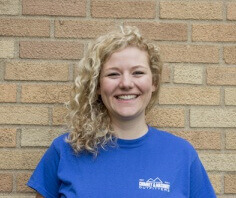
"Hannah has been more than willing to go outside of her job responsibilities to help the Brick + Ember Outfitters team as a whole, and is happy to do it" Kourtney Zahn.
Realtors: Let Us Fix These Common Issues For You
As a realtor, you encounter homes to go on the market that are in a variety of conditions—those that are picture perfect and those that need some work. You likely regularly walk through homes that need brick pavement repair, chimney sweeps, and fireplace rebuilds. Some issues are easy to diagnose, while others aren’t as obvious. That being said, if you notice any of the following problems with your homes on the market, give Brick + Ember Outfitters a call. We can solve these issues for you!
Window Frame Brick Damage
This window frame is in need of brick repair. If it’s not taken care of, water leakage could cause worse damage, so we suggest getting it taken care of sooner than later.
Cracks in the Firebox
The firebox is the most visible part of the fireplace, so it’s easy to see these cracks. While they’re not pretty to look at, they need fixed for reasons beyond just aesthetics.
Steps in Disrepair
These steps are in desperate need of tuckpointing. We’re your go-to for sidewalks, steps, and paver repair.
DIY Chimney Fix
Warning: don’t try this at home! This is the result of a DIY chimney repair gone wrong. Thankfully, we clean up messes like this.
Spalling Brick
To a potential homebuyer, this chimney looks like work. Hire us to fix these spalling bricks and put their minds at ease!
If you notice these issues in the homes you’re listing, give Brick + Ember Outfitters a call. We accommodate realtors by working on your timeframe and being pre-emptive about issues. Partner with Brick + Ember Outfitters today to fix these problems before they become more significant than they already are.

